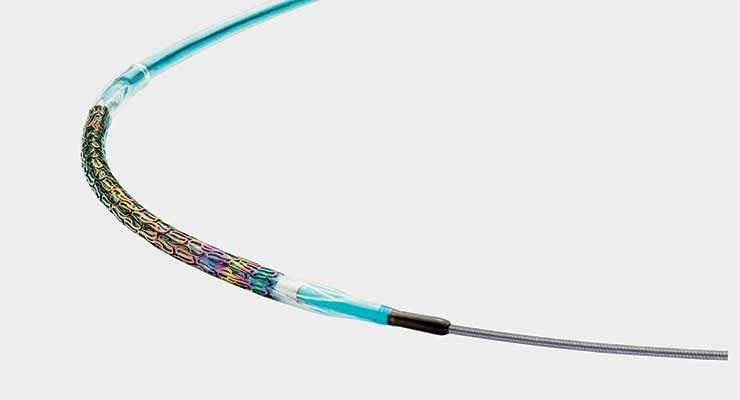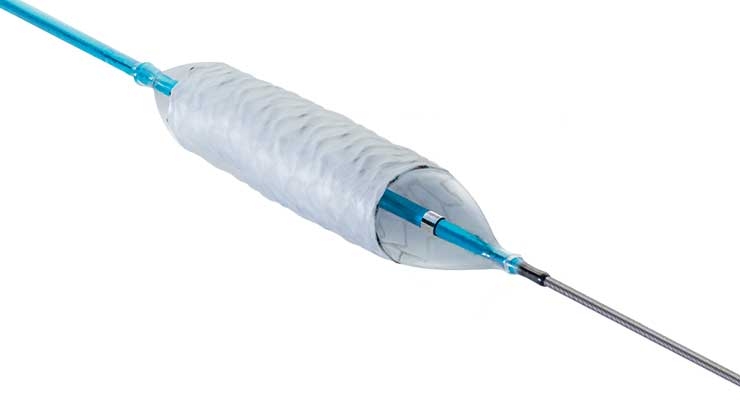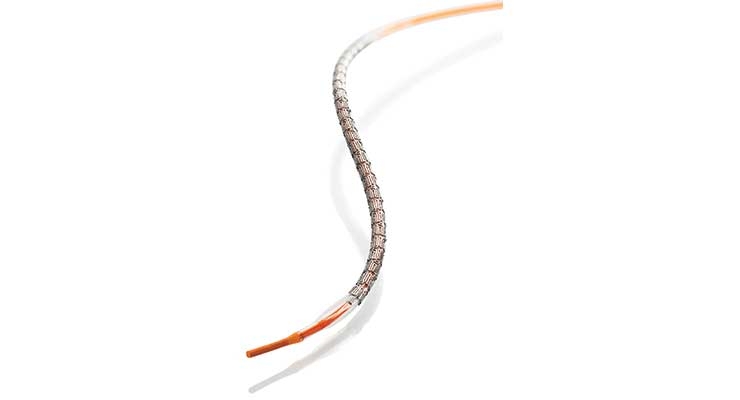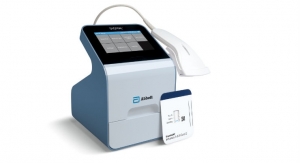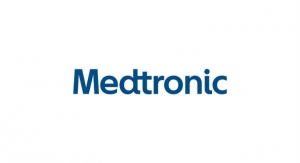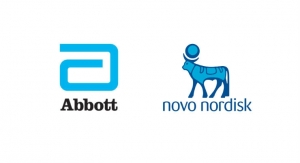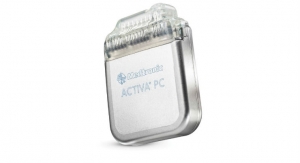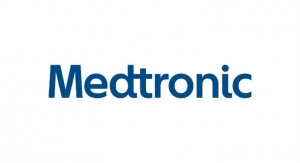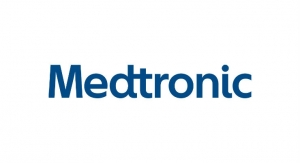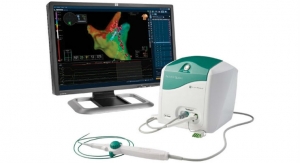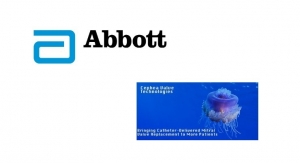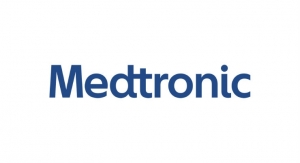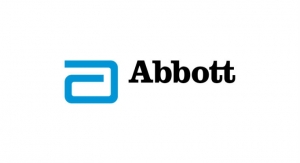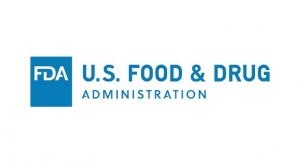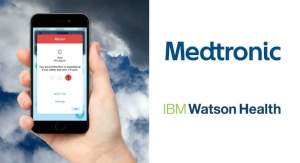Michael Barbella, Managing Editor03.07.19
Not every new technology is recognized or celebrated for its revolutionary potential.
Granted, not every innovation is the eyebrow-raising, history-making, life-changing kind of breakthrough destined to change the course of humanity, but those that have initially were unappreciated, underestimated, and feared at their debut.
Consider the fine art of writing, which arguably was the most important invention for the development of civilization. It was panned at first by Socrates, who reportedly feared it would induce forgetfulness into its practitioners. “...they will not practice using their memory because they will put their trust in writing, which is external and depends on signs that belong to others, instead of trying to remember from the inside, completely on their own,” the classical Greek philosopher contemplated in the myth of Thamus and Theuth (or Thoth, the Egyptian god of writing). ”Your invention will enable them to hear many things without being properly taught, and they will imagine that they have come to know much while for the most part they will know nothing.”
A rather harsh assessment from the “father” of Western thought, no? Nevertheless, Socrates’ quick brush-off of writing epitomizes the technological skepticism that has existed throughout recorded (written) history.
More than 1,900 years after Socrates summarily dismissed the power of prose, the monk and leading scholar Johannes Trithemius predicted the printing press’ swift demise. “The word written on parchment will last a thousand years,” he boasted. “The printed word is on paper...The most you can expect a book of paper to survive is two hundred years.”
Nearly four centuries later (1876), The New York Times lambasted German scientist and telephone inventor Philipp Reis for conspiring to empty concert halls and churches during America’s Centennial celebration, deeming the calling device “a dark design” contrived by U.S. enemies. The invention’s subsequent incantations triggered their fair share of diffidence, too: Mobile telephony pioneer Marty Cooper presumed cell phones would never be popular or cheap enough for mass appeal, and journalists virtually panned the iPhone during its 2007 launch. “Apple should pull the plug on the iPhone,” MarketWatch columnist John C. Dvorak wrote. “What Apple risks here is its reputation as a hot company that can do no wrong.”
“Apple will sell a few to its fans, but it won’t make a long-term mark on the industry,” Bloomberg writer Matthew Lynn anticipated.
Microsoft’s then-CEO Steve Ballmer agreed. “There’s no chance the iPhone is going to get any significant market share,” he told USA Today. “No chance.”
The odds seemed just as dismal for Andreas R. Gruentzig, M.D., a German radiologist/cardiologist and balloon angioplasty inventor. Gruentzig is renowned for devising the balloon-tipped catheter, a device regarded as one of the most important technological and therapeutic healthcare advancements of the 20th century.
Though he is widely credited with the idea, Gruentzig actually borrowed the balloon angioplasty concept from U.S. vascular radiologist Charles Theodore Dotter, an intelligent but flamboyant risk-taker who described flow-directed balloon catheterization, the double-lumen balloon catheter, the safety guidewire, and percutaneous arterial stenting more than a decade before his German counterpart.
Not surprisingly, Dotter’s ideas and the primitive catheters he created were arbitrarily dismissed by U.S. vascular surgeons (doctors nicknamed him “Crazy Charlie”). But he was a virtual celebrity overseas, where the progressive European medical community almost immediately recognized Dotter’s work for its game-changing cardiac treatment potential.
Gruentzig first learned of Dotter’s catheter-based arterial dilation technique (dubbed Dottern in Germany) during a lecture in Frankfurt. Intrigued, he began developing balloons strong enough to compress lesions and millimeter-sized catheters capable of monitoring pressure, maintaining blood flow, and passing fluid into the balloons for inflation.
Gruentzig’s finished design consisted of a catheter with a small inflatable balloon molded to its tip; the first devices were somewhat rudimentary but nonetheless customized for individual patients on the late doctor’s kitchen table with the help of his assistant and their respective spouses.
Buoyed by multiple successful femoral procedures, Gruentzig performed the world’s first coronary angioplasty in September 1977 on 37-year-old angina patient Adolph Bachman. In a documentary marking the 35th anniversary of the radical surgery, Bachman recounted the confidence he felt in both Gruentzig and the procedure itself, even though it had never before been attempted in humans.
“Everything was so clear. Even as a total layman, I understood his method,” Bachman recalled in the film. “I understood what was going to go on. And I knew there was no reason to worry. I was 100 percent convinced that it [the surgery] would be successful. But that was all because Dr. Gruentzig was so clear and because the method itself was so simple.”
Procedural simplicity, however, failed to quell the skepticism Gruentzig faced over his innovation. Fueling those misgivings was the various complications that plagued the initial procedures—difficulties like restenosis (a possibility in 20 percent or more of the cases), acute dissection, and occlusion. Large dissections were particularly problematic, as they could only be repaired through emergency bypass surgery. Thus, all early angioplasties required backup surgical teams.
“I remember Dr. Gruentzig coming to the NHLBI [National Heart, Lung, and Blood Institute] and giving us a lecture about [balloon angioplasty] being the greatest way to treat coronary disease,” Renu Virmani, M.D., internationally renowned cardiovascular pathologist and CVPath Institute president, told Cardiology Today in a 2011 interview. “Some of us said at that time it didn’t sound like a smart idea.”
Neither did stents at first. Developed explicitly to overcome the limitations of angioplasty, the tiny tube-shaped devices resolved to prevent recoil and restenosis (vessel renarrowing) by permanently propping open arterial walls. An ingenious concept, for certain, but the innovation beget its own set of shortcomings.
“My first impressions with stents were that they were weird-looking and didn’t deploy properly,” Virmani recalled. “The problems had to do with the quality of the balloons and the deployment, as well as how much may have slipped off the stent. Those understandings weren’t there in those days.”
Also missing was an understanding of the necessary components for a successful product (composition, architecture, manufacturing techniques, etc.). Exploratory stent models, for example, featured self-expanding springs or coils that impeded delivery and led to complications. Others lacked flexibility or the tensile strength needed to withstand the multiple forces occurring within coronary arteries.
Julio Palmaz, M.D., an Argentinian-born cardiologist and vascular radiologist, eventually hit upon the winning formula, substituting the springs and coils present in earlier stent designs with a balloon-expandable stainless steel metal tube. Palmaz based his version on a metal lathe he found abandoned in his garage; the discovery led to an “aha!” moment about the elasticity of hole-filled metal tubing.
Palmaz’s stent—which he co-developed with (then) Brooke Army Medical Center cardiologist Richard A. Schatz and his colleagues—was tested in canine coronary arteries in 1985 before being implanted in humans two years later. The U.S. Food and Drug Administration (FDA) approved the device for use in peripheral vessels in 1991 and in coronary arteries in 1994; Johnson & Johnson, which invested more than $100 million to develop the product, enjoyed a virtual monopoly on the early stent market, capturing a 90 percent share. The company purchased Palmaz’s patent on the device in 1998.
The Palmaz-Schatz stent dominated the burgeoning percutaneous coronary intervention market for much of the 1990s, even as rival devices emerged from Cook Group (Flexstent); Cordis Corporation (Cordis); Medtronic (Wiktor); Applied Vascular Engineering Inc. (Micro); and Advanced Cardiovascular Systems Inc. (Multi-Link).
The first stents were made from stainless steel (316L SS containing iron, nickel, chromium, molybdenum), but later iterations used cobalt chromium and platinum chromium to improve both strength and visibility. Although these devices reduced elastic recoil and restenosis, they were bulky and technically challenging to use, resulting in frequent deployment and embolization failures. The all-metal stents also were associated with higher rates of in-stent restenosis and sub-acute stent thrombosis, the latter of which is a potentially fatal complication occurring up to 30 days after implantation.
“Bare metal stents are seldom used, and are often saved for use only in high-bleeding risk and elderly patients due to concerns of bleeding from dual anti-platelet therapy after DES implantation,” noted Tim Girton, vice president of Interventional Cardiology research and development at Boston Scientific Corp. “However, recent clinical evidence from the newest biodegradable polymer-coated stents suggests that BMS [bare metal stents] no longer have a role even in that patient subset.”
Maybe so, but bare metal stents are far from extinct. The products are still among the viable treatment options offered by major cardiovascular solution providers, and they still routinely win regulatory support. Case in point: The FDA two years ago approved Biotronik’s Pro-Kinetic Energy BMS, a device designed to improve coronary luminal diameter in patients with new and recurring coronary artery blockages; the stent, according to the company, features an “ultra-thin” (60µm) strut that allows for “optimal deliverability under extreme tortuosity and calcification.”
Similarly, Medtronic received FDA approval last fall for its Valiant Navion thoracic stent graft system for repairing (via a minimally invasive approach) all descending thoracic aortic lesions, including thoracic aortic aneurysms, blunt thoracic aortic injuries, penetrating atherosclerotic ulcers, intramural haematomas, and aortic type B dissections. The system features both CoveredSeal (proximal covered) and FreeFlo (proximal bare metal) stent configurations; an investigational device exemption study showed the latter option implanted successfully (without deployment or access failures) in nearly three-quarters of procedures.
Further cementing BMS’ market longevity is a 2016 Norwegian coronary stent trial (NORSTENT) that found statistically equivalent survival rates between BMS and drug-eluting stent (DES) recipients (17.1 percent vs. 16 percent). In addition to proving BMS safety and efficacy, the study demonstrated the devices’ impressive evolution over the past 30 years—restenosis risk is now 10 percent over six years (compared with 30-40 percent after 12 months in the 1990s) and stent thrombosis is currently 1 percent over six years (down from 10-15 percent three decades ago).
Despite such dramatic improvements, however, BMS remain a second-rate treatment alternative, having long taken a back seat to drug-eluting stents. Developed to address their predecessors’ high restenosis rates and reduce the need for revascularization, DES consist of a bare metal device coated with a medicine to suppress arterial renarrowing.
Cordis was the first to market with a DES, receiving CE mark approval in 2002 and FDA clearance in 2003 for the Cypher sirolimus-eluting stent. Clinical studies showed Cypher significantly reduced neointimal hyperplasia, in-stent restenosis, and major adverse cardiac event rates up to four years after implantation.
The Cypher’s trial data decisively proved the DES concept, opening the floodgates for competing devices and spawning a market worth $6.2 billion last year. Rising cardiovascular disease rates and increasing demand for minimally invasive surgery is expected to drive the sector’s projected 4.7 percent annual growth rate through 2026, pushing its global value past $9 billion.
“Over the past five years, the coronary drug-eluting stent market has transitioned to a relatively mature market,” Girton said. “Current procedural volume growth is modest and largely due to an aging population combined with improved stents and delivery systems allowing the treatment of more complex patients. In the U.S. market, drug-eluting stents are experiencing the most procedural volume growth. Current generation drug-eluting stents are incredibly effective and have an excellent safety profile.”
Such efficacy is due mainly to new designs as well as the evolution of polymers and anti-restenotic drugs used in stent composition. Early DES incorporated medication into permanent synthetic polymers whereas newer models use more biocompatible materials such as poly vinylidene fluoride, hexofluropropylene, and polyvinyl pyrollidone. Similarly, stents’ immunosuppressive coatings have diversified to include the “limus” family of drugs (amphilimus, everolimus, novolimus, umirolimus, zotarolimus) along with the early favorites—sirolimus (a natural antibiotic) and paclitaxel (a chemotherapy drug).
All drug-eluting stents have the same basic elements: A bare metal framework coated with a polymer that gradually releases an immunosuppressant over time to inhibit arterial renarrowing. The ingenuity in these devices lies in the physical design (type of metal used, strut thickness, strut interlinkage mechanics), the specific anti-restenotic drug used, and the polymer’s release characteristics (amount released and rapidity).
Medtronic’s Resolute Onyx DES, for example, has thinner struts and features Core Wire technology, a manufacturing method unique to the company that involves forming a single strand of cobalt alloy wire into a sinusoidal wave to construct a stent. The innovation enables greater deliverability and conformability to the vessel wall, according to the company. Last winter, Medtronic won FDA approval for the 2-millimeter version of the Onyx, the only device of that size currently available in the United States.
Abbott, meanwhile, updated the design of its market-leading XIENCE stent system in May 2018, integrating a thinner profile, increased flexibility, longer lengths, and small diameters into the Sierra model. Company executives said the new system was developed to treat complex cases, including patients with multiple or totally blocked vessels.
XIENCE, however, could face some serious competition from MicroPort’s Firehawk DES, a thin-strut device featuring a biodegradable polymer drug delivery system. The 86-mcm cobalt chromium stent contains abluminal grooves that release rapamycin (a.k.a., sirolimus) directly to the affected artery wall, exposing patients to only one-third as much active drug as other drug-eluting devices, the company asserts. Ninety percent of the rapamycin is released within 90 days after implantation.
The Firehawk’s clinical proficiencies have been proven both in China and Europe. A European study (TARGET All Comers) found Firehawk to be equally as safe and effective as XIENCE; the device’s 12-month target lesion failure rate was 6.1 percent compared with 5.9 percent for the Abbott stent. In addition, the target lesion revascularization rate was lower in the Firehawk group and the stent thrombosis rate was the same for both devices, according to trial data.
The TARGET All Comers results currently are being incorporated into an FDA study. The Firehawk stent already is approved for use in Europe.
“Stent research, design, manufacturing, and the clinical studies required to bring them to the U.S. market require decades of dedication and millions [of dollars] in capital investment,”said Dr. Alexander Uhl, senior vice president, corporate marketing, at Biotronik, a global developer, manufacturer, and seller of cardiovascular products and equipment. “At Biotronik, we never rush to market. We research, innovate, and develop, then significantly invest in clinical studies to prove the capabilities of our products.”
The company’s formula has resulted in such innovations as the PK Papyrus stent and Orsiro DES system. The former device—designed to treat acute coronary perforations, or blood vessel tears within the heart—was the first stent in 17 years to be approved by the FDA for such an indication (September 2018).
Built on Biotronik’s ultra-thin stent platform, the PK Papyrus System is designed for use in arteries measuring 2.5mm to 5mm in diameter. The covered stent is available in 17 sizes, expanding treatment options and helping avoid the need for emergency coronary artery bypass grafting. Biotronik claims the PK Papyrus is the only 5 French compatible covered coronary stent currently available in the United States. Company data indicate the covered stent is 58 percent more flexible and has a 23 percent smaller crossing profile compared to Graftmaster (JOSTENT). The latter product has a layered dual-stent design and is the only other covered coronary stent available in the United States.
“The PK Papyrus is a unique, life-saving technology that is an important part of this portfolio. We invested in the development of PK Papyrus to meet a critical need in interventional cardiology,” Uhl told Medical Product Outsourcing. “While coronary artery perforation is very uncommon—less than 4,000 per year in the United States—physicians must be fully prepared for this emergency event in order to save lives. When a perforation occurs during a percutaneous coronary intervention procedure, physicians need a reliable covered stent that can be deployed quickly. Designed to deliver when seconds count, PK Papyrus is engineered on a single-stent, ultrathin strut platform that makes it more flexible and gives it a low crossing profile. Because of these features, PK Papyrus delivers more like a conventional stent with 5 French compatibility. We’ve improved every aspect of previous covered stents, transforming what was once a dreaded emergency use device into a reliable solution that physicians can deploy with confidence in critical situations.”
Biotronik followed up its PK Papyrus approval with the FDA’s February ratification of the Orsiro stent, the first and only ultrathin DES to outperform Abbott’s XIENCE. Orsiro received CE marking in 2011 and has been used to treat more than 1 million patients worldwide to date.
For use in percutaneous coronary intervention (PCI) procedures, the cobalt chromium metal stent elutes sirolimus via BIOlute, Biotronik’s bioabsorbable polymer coating. Beneath the bioabsorbable layer is proBIO, a passive coating on the bare metal surface designed to reduce nickel ion release. The Orsiro stent system provides ultrathin stent struts without compromising radial strength, and a low crossing profile for easier lesion cross in complex PCI. The device is available in 52 sizes ranging from 2.25mm to 4mm in diameter and lengths up to 40 mm, the longest available in the United States.
“The BIOFLOW V pivotal trial shows Biotronik’s ultra-thin Orsiro DES has demonstrated sustained improvement over XIENCE at multiple clinical endpoints,” Uhl explained. “Orsiro’s outcomes may shift the market back toward a greater focus on clinical data. Outcomes data is what really matters when creating and embracing value-based care. The U.S. DES market has suffered for too long from a lack of innovation. Orsiro is poised to disrupt the U. S. market with its ultrathin stent technology. Physicians have been impressed by the superior performance and clinical outcome data proven in regulatory and pivotal clinical trials. For hospitals and health systems, outcomes data is paramount to providing the best possible patient care. Complacency isn’t an option.”
Nor will it ever be again.
Granted, not every innovation is the eyebrow-raising, history-making, life-changing kind of breakthrough destined to change the course of humanity, but those that have initially were unappreciated, underestimated, and feared at their debut.
Consider the fine art of writing, which arguably was the most important invention for the development of civilization. It was panned at first by Socrates, who reportedly feared it would induce forgetfulness into its practitioners. “...they will not practice using their memory because they will put their trust in writing, which is external and depends on signs that belong to others, instead of trying to remember from the inside, completely on their own,” the classical Greek philosopher contemplated in the myth of Thamus and Theuth (or Thoth, the Egyptian god of writing). ”Your invention will enable them to hear many things without being properly taught, and they will imagine that they have come to know much while for the most part they will know nothing.”
A rather harsh assessment from the “father” of Western thought, no? Nevertheless, Socrates’ quick brush-off of writing epitomizes the technological skepticism that has existed throughout recorded (written) history.
More than 1,900 years after Socrates summarily dismissed the power of prose, the monk and leading scholar Johannes Trithemius predicted the printing press’ swift demise. “The word written on parchment will last a thousand years,” he boasted. “The printed word is on paper...The most you can expect a book of paper to survive is two hundred years.”
Nearly four centuries later (1876), The New York Times lambasted German scientist and telephone inventor Philipp Reis for conspiring to empty concert halls and churches during America’s Centennial celebration, deeming the calling device “a dark design” contrived by U.S. enemies. The invention’s subsequent incantations triggered their fair share of diffidence, too: Mobile telephony pioneer Marty Cooper presumed cell phones would never be popular or cheap enough for mass appeal, and journalists virtually panned the iPhone during its 2007 launch. “Apple should pull the plug on the iPhone,” MarketWatch columnist John C. Dvorak wrote. “What Apple risks here is its reputation as a hot company that can do no wrong.”
“Apple will sell a few to its fans, but it won’t make a long-term mark on the industry,” Bloomberg writer Matthew Lynn anticipated.
Microsoft’s then-CEO Steve Ballmer agreed. “There’s no chance the iPhone is going to get any significant market share,” he told USA Today. “No chance.”
The odds seemed just as dismal for Andreas R. Gruentzig, M.D., a German radiologist/cardiologist and balloon angioplasty inventor. Gruentzig is renowned for devising the balloon-tipped catheter, a device regarded as one of the most important technological and therapeutic healthcare advancements of the 20th century.
Though he is widely credited with the idea, Gruentzig actually borrowed the balloon angioplasty concept from U.S. vascular radiologist Charles Theodore Dotter, an intelligent but flamboyant risk-taker who described flow-directed balloon catheterization, the double-lumen balloon catheter, the safety guidewire, and percutaneous arterial stenting more than a decade before his German counterpart.
Not surprisingly, Dotter’s ideas and the primitive catheters he created were arbitrarily dismissed by U.S. vascular surgeons (doctors nicknamed him “Crazy Charlie”). But he was a virtual celebrity overseas, where the progressive European medical community almost immediately recognized Dotter’s work for its game-changing cardiac treatment potential.
Gruentzig first learned of Dotter’s catheter-based arterial dilation technique (dubbed Dottern in Germany) during a lecture in Frankfurt. Intrigued, he began developing balloons strong enough to compress lesions and millimeter-sized catheters capable of monitoring pressure, maintaining blood flow, and passing fluid into the balloons for inflation.
Gruentzig’s finished design consisted of a catheter with a small inflatable balloon molded to its tip; the first devices were somewhat rudimentary but nonetheless customized for individual patients on the late doctor’s kitchen table with the help of his assistant and their respective spouses.
Buoyed by multiple successful femoral procedures, Gruentzig performed the world’s first coronary angioplasty in September 1977 on 37-year-old angina patient Adolph Bachman. In a documentary marking the 35th anniversary of the radical surgery, Bachman recounted the confidence he felt in both Gruentzig and the procedure itself, even though it had never before been attempted in humans.
“Everything was so clear. Even as a total layman, I understood his method,” Bachman recalled in the film. “I understood what was going to go on. And I knew there was no reason to worry. I was 100 percent convinced that it [the surgery] would be successful. But that was all because Dr. Gruentzig was so clear and because the method itself was so simple.”
Procedural simplicity, however, failed to quell the skepticism Gruentzig faced over his innovation. Fueling those misgivings was the various complications that plagued the initial procedures—difficulties like restenosis (a possibility in 20 percent or more of the cases), acute dissection, and occlusion. Large dissections were particularly problematic, as they could only be repaired through emergency bypass surgery. Thus, all early angioplasties required backup surgical teams.
“I remember Dr. Gruentzig coming to the NHLBI [National Heart, Lung, and Blood Institute] and giving us a lecture about [balloon angioplasty] being the greatest way to treat coronary disease,” Renu Virmani, M.D., internationally renowned cardiovascular pathologist and CVPath Institute president, told Cardiology Today in a 2011 interview. “Some of us said at that time it didn’t sound like a smart idea.”
Neither did stents at first. Developed explicitly to overcome the limitations of angioplasty, the tiny tube-shaped devices resolved to prevent recoil and restenosis (vessel renarrowing) by permanently propping open arterial walls. An ingenious concept, for certain, but the innovation beget its own set of shortcomings.
“My first impressions with stents were that they were weird-looking and didn’t deploy properly,” Virmani recalled. “The problems had to do with the quality of the balloons and the deployment, as well as how much may have slipped off the stent. Those understandings weren’t there in those days.”
Also missing was an understanding of the necessary components for a successful product (composition, architecture, manufacturing techniques, etc.). Exploratory stent models, for example, featured self-expanding springs or coils that impeded delivery and led to complications. Others lacked flexibility or the tensile strength needed to withstand the multiple forces occurring within coronary arteries.
Julio Palmaz, M.D., an Argentinian-born cardiologist and vascular radiologist, eventually hit upon the winning formula, substituting the springs and coils present in earlier stent designs with a balloon-expandable stainless steel metal tube. Palmaz based his version on a metal lathe he found abandoned in his garage; the discovery led to an “aha!” moment about the elasticity of hole-filled metal tubing.
Palmaz’s stent—which he co-developed with (then) Brooke Army Medical Center cardiologist Richard A. Schatz and his colleagues—was tested in canine coronary arteries in 1985 before being implanted in humans two years later. The U.S. Food and Drug Administration (FDA) approved the device for use in peripheral vessels in 1991 and in coronary arteries in 1994; Johnson & Johnson, which invested more than $100 million to develop the product, enjoyed a virtual monopoly on the early stent market, capturing a 90 percent share. The company purchased Palmaz’s patent on the device in 1998.
The Palmaz-Schatz stent dominated the burgeoning percutaneous coronary intervention market for much of the 1990s, even as rival devices emerged from Cook Group (Flexstent); Cordis Corporation (Cordis); Medtronic (Wiktor); Applied Vascular Engineering Inc. (Micro); and Advanced Cardiovascular Systems Inc. (Multi-Link).
The first stents were made from stainless steel (316L SS containing iron, nickel, chromium, molybdenum), but later iterations used cobalt chromium and platinum chromium to improve both strength and visibility. Although these devices reduced elastic recoil and restenosis, they were bulky and technically challenging to use, resulting in frequent deployment and embolization failures. The all-metal stents also were associated with higher rates of in-stent restenosis and sub-acute stent thrombosis, the latter of which is a potentially fatal complication occurring up to 30 days after implantation.
“Bare metal stents are seldom used, and are often saved for use only in high-bleeding risk and elderly patients due to concerns of bleeding from dual anti-platelet therapy after DES implantation,” noted Tim Girton, vice president of Interventional Cardiology research and development at Boston Scientific Corp. “However, recent clinical evidence from the newest biodegradable polymer-coated stents suggests that BMS [bare metal stents] no longer have a role even in that patient subset.”
Maybe so, but bare metal stents are far from extinct. The products are still among the viable treatment options offered by major cardiovascular solution providers, and they still routinely win regulatory support. Case in point: The FDA two years ago approved Biotronik’s Pro-Kinetic Energy BMS, a device designed to improve coronary luminal diameter in patients with new and recurring coronary artery blockages; the stent, according to the company, features an “ultra-thin” (60µm) strut that allows for “optimal deliverability under extreme tortuosity and calcification.”
Similarly, Medtronic received FDA approval last fall for its Valiant Navion thoracic stent graft system for repairing (via a minimally invasive approach) all descending thoracic aortic lesions, including thoracic aortic aneurysms, blunt thoracic aortic injuries, penetrating atherosclerotic ulcers, intramural haematomas, and aortic type B dissections. The system features both CoveredSeal (proximal covered) and FreeFlo (proximal bare metal) stent configurations; an investigational device exemption study showed the latter option implanted successfully (without deployment or access failures) in nearly three-quarters of procedures.
Further cementing BMS’ market longevity is a 2016 Norwegian coronary stent trial (NORSTENT) that found statistically equivalent survival rates between BMS and drug-eluting stent (DES) recipients (17.1 percent vs. 16 percent). In addition to proving BMS safety and efficacy, the study demonstrated the devices’ impressive evolution over the past 30 years—restenosis risk is now 10 percent over six years (compared with 30-40 percent after 12 months in the 1990s) and stent thrombosis is currently 1 percent over six years (down from 10-15 percent three decades ago).
Despite such dramatic improvements, however, BMS remain a second-rate treatment alternative, having long taken a back seat to drug-eluting stents. Developed to address their predecessors’ high restenosis rates and reduce the need for revascularization, DES consist of a bare metal device coated with a medicine to suppress arterial renarrowing.
Cordis was the first to market with a DES, receiving CE mark approval in 2002 and FDA clearance in 2003 for the Cypher sirolimus-eluting stent. Clinical studies showed Cypher significantly reduced neointimal hyperplasia, in-stent restenosis, and major adverse cardiac event rates up to four years after implantation.
The Cypher’s trial data decisively proved the DES concept, opening the floodgates for competing devices and spawning a market worth $6.2 billion last year. Rising cardiovascular disease rates and increasing demand for minimally invasive surgery is expected to drive the sector’s projected 4.7 percent annual growth rate through 2026, pushing its global value past $9 billion.
“Over the past five years, the coronary drug-eluting stent market has transitioned to a relatively mature market,” Girton said. “Current procedural volume growth is modest and largely due to an aging population combined with improved stents and delivery systems allowing the treatment of more complex patients. In the U.S. market, drug-eluting stents are experiencing the most procedural volume growth. Current generation drug-eluting stents are incredibly effective and have an excellent safety profile.”
Such efficacy is due mainly to new designs as well as the evolution of polymers and anti-restenotic drugs used in stent composition. Early DES incorporated medication into permanent synthetic polymers whereas newer models use more biocompatible materials such as poly vinylidene fluoride, hexofluropropylene, and polyvinyl pyrollidone. Similarly, stents’ immunosuppressive coatings have diversified to include the “limus” family of drugs (amphilimus, everolimus, novolimus, umirolimus, zotarolimus) along with the early favorites—sirolimus (a natural antibiotic) and paclitaxel (a chemotherapy drug).
All drug-eluting stents have the same basic elements: A bare metal framework coated with a polymer that gradually releases an immunosuppressant over time to inhibit arterial renarrowing. The ingenuity in these devices lies in the physical design (type of metal used, strut thickness, strut interlinkage mechanics), the specific anti-restenotic drug used, and the polymer’s release characteristics (amount released and rapidity).
Medtronic’s Resolute Onyx DES, for example, has thinner struts and features Core Wire technology, a manufacturing method unique to the company that involves forming a single strand of cobalt alloy wire into a sinusoidal wave to construct a stent. The innovation enables greater deliverability and conformability to the vessel wall, according to the company. Last winter, Medtronic won FDA approval for the 2-millimeter version of the Onyx, the only device of that size currently available in the United States.
Abbott, meanwhile, updated the design of its market-leading XIENCE stent system in May 2018, integrating a thinner profile, increased flexibility, longer lengths, and small diameters into the Sierra model. Company executives said the new system was developed to treat complex cases, including patients with multiple or totally blocked vessels.
XIENCE, however, could face some serious competition from MicroPort’s Firehawk DES, a thin-strut device featuring a biodegradable polymer drug delivery system. The 86-mcm cobalt chromium stent contains abluminal grooves that release rapamycin (a.k.a., sirolimus) directly to the affected artery wall, exposing patients to only one-third as much active drug as other drug-eluting devices, the company asserts. Ninety percent of the rapamycin is released within 90 days after implantation.
The Firehawk’s clinical proficiencies have been proven both in China and Europe. A European study (TARGET All Comers) found Firehawk to be equally as safe and effective as XIENCE; the device’s 12-month target lesion failure rate was 6.1 percent compared with 5.9 percent for the Abbott stent. In addition, the target lesion revascularization rate was lower in the Firehawk group and the stent thrombosis rate was the same for both devices, according to trial data.
The TARGET All Comers results currently are being incorporated into an FDA study. The Firehawk stent already is approved for use in Europe.
“Stent research, design, manufacturing, and the clinical studies required to bring them to the U.S. market require decades of dedication and millions [of dollars] in capital investment,”said Dr. Alexander Uhl, senior vice president, corporate marketing, at Biotronik, a global developer, manufacturer, and seller of cardiovascular products and equipment. “At Biotronik, we never rush to market. We research, innovate, and develop, then significantly invest in clinical studies to prove the capabilities of our products.”
The company’s formula has resulted in such innovations as the PK Papyrus stent and Orsiro DES system. The former device—designed to treat acute coronary perforations, or blood vessel tears within the heart—was the first stent in 17 years to be approved by the FDA for such an indication (September 2018).
Built on Biotronik’s ultra-thin stent platform, the PK Papyrus System is designed for use in arteries measuring 2.5mm to 5mm in diameter. The covered stent is available in 17 sizes, expanding treatment options and helping avoid the need for emergency coronary artery bypass grafting. Biotronik claims the PK Papyrus is the only 5 French compatible covered coronary stent currently available in the United States. Company data indicate the covered stent is 58 percent more flexible and has a 23 percent smaller crossing profile compared to Graftmaster (JOSTENT). The latter product has a layered dual-stent design and is the only other covered coronary stent available in the United States.
“The PK Papyrus is a unique, life-saving technology that is an important part of this portfolio. We invested in the development of PK Papyrus to meet a critical need in interventional cardiology,” Uhl told Medical Product Outsourcing. “While coronary artery perforation is very uncommon—less than 4,000 per year in the United States—physicians must be fully prepared for this emergency event in order to save lives. When a perforation occurs during a percutaneous coronary intervention procedure, physicians need a reliable covered stent that can be deployed quickly. Designed to deliver when seconds count, PK Papyrus is engineered on a single-stent, ultrathin strut platform that makes it more flexible and gives it a low crossing profile. Because of these features, PK Papyrus delivers more like a conventional stent with 5 French compatibility. We’ve improved every aspect of previous covered stents, transforming what was once a dreaded emergency use device into a reliable solution that physicians can deploy with confidence in critical situations.”
Biotronik followed up its PK Papyrus approval with the FDA’s February ratification of the Orsiro stent, the first and only ultrathin DES to outperform Abbott’s XIENCE. Orsiro received CE marking in 2011 and has been used to treat more than 1 million patients worldwide to date.
For use in percutaneous coronary intervention (PCI) procedures, the cobalt chromium metal stent elutes sirolimus via BIOlute, Biotronik’s bioabsorbable polymer coating. Beneath the bioabsorbable layer is proBIO, a passive coating on the bare metal surface designed to reduce nickel ion release. The Orsiro stent system provides ultrathin stent struts without compromising radial strength, and a low crossing profile for easier lesion cross in complex PCI. The device is available in 52 sizes ranging from 2.25mm to 4mm in diameter and lengths up to 40 mm, the longest available in the United States.
“The BIOFLOW V pivotal trial shows Biotronik’s ultra-thin Orsiro DES has demonstrated sustained improvement over XIENCE at multiple clinical endpoints,” Uhl explained. “Orsiro’s outcomes may shift the market back toward a greater focus on clinical data. Outcomes data is what really matters when creating and embracing value-based care. The U.S. DES market has suffered for too long from a lack of innovation. Orsiro is poised to disrupt the U. S. market with its ultrathin stent technology. Physicians have been impressed by the superior performance and clinical outcome data proven in regulatory and pivotal clinical trials. For hospitals and health systems, outcomes data is paramount to providing the best possible patient care. Complacency isn’t an option.”
Nor will it ever be again.

